Do Snails Shed Their Shells?

When it comes to snails, one question that might pique your curiosity is, “Do Snails Shed Their Shells?” As a fascinating and diverse group of creatures, snails exhibit unique behaviors and traits worth exploring. To understand the relationship between snails and their shells, it’s important to have basic knowledge about these mollusks and the purpose their shells serve.
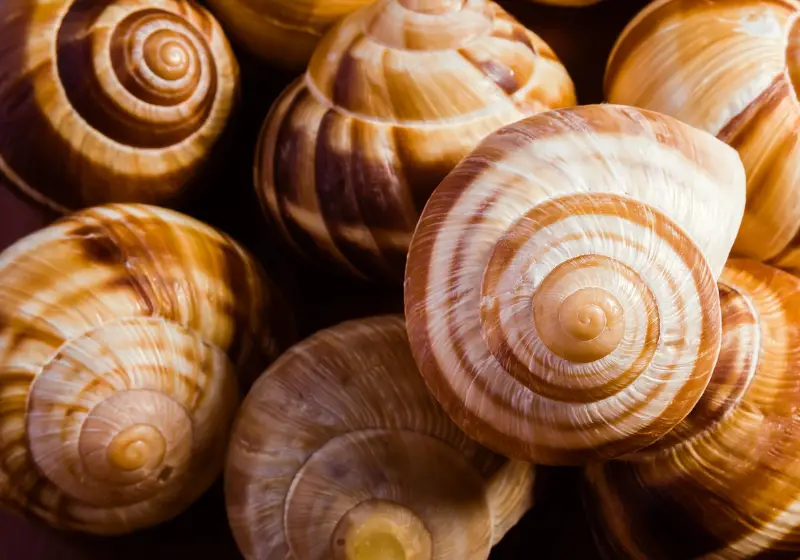
As members of the gastropod family, Snails possess soft bodies without any skeletal structure. Their shells function as an exoskeleton, providing them with protection and support. Contrary to what some might think, snails cannot leave their shells or live without them, as the shell is an integral part of their anatomy. With this background information, let’s investigate whether snails shed these essential structures.
Shedding implies that an organism can discard an old component and either replace it or live without it. For snails, this is not the case. It has been established that no known species of snail sheds its shell. This is because snail shells are permanent features that grow with the snail over time, and shedding them would be detrimental to their survival.
Contents
Table of Contents
Understanding Snail Shells

Snail shells are comprised mainly of calcium carbonate, which strengthens and protects the snail’s delicate internal organs. As the snail grows, so does its shell, meaning it never sheds or changes its shell throughout its life. The shell is essential to the snail’s body and protects against predators and environmental hazards. In addition, the snail cannot repair or maintain a new shell as it would not be fused to its body source.
The formation of snail shells is a fascinating biological process. At birth, the snail’s visceral hump turns along its linear axis, eventually creating a coiled snail shell source. Most snail shells follow a clockwise, spiral pattern, with the tip being the oldest part of the shell and the opening being the newest.
The appearance and thickness of the shell can vary depending on the snail’s age and environmental factors. Young snails typically have a nearly transparent shell, while older snails possess thicker, more opaque shells.
Snail shells serve multiple purposes for the snail. Besides providing physical protection, it also acts as a water reservoir and aids in temperature regulation. To maintain its shell, a snail uses the mantle—a special layer of skin at the edge of the shell—to secrete protein and calcium carbonate source. These building blocks are essential for shell repair, growth, and overall integrity.
When understanding the snail shell’s formation, it’s also essential to note the formin protein. Formin plays a pivotal role in controlling the growth of calcium carbonate crystals, thereby influencing the overall shell formation source. It helps regulate the snail’s shell shape and pattern, resulting in the diversity of snail shells found in nature.
In summary, snail shells are integral to a snail’s biology and offer vital protection and important functions. The growth and maintenance of snail shells involve a complex interplay of various factors, including calcium carbonate, formin protein, and the snail’s mantle, enabling these fascinating creatures to survive and thrive in various environments.
Process of Shell Formation

Genetic and Developmental Factors
Genetic and developmental factors at play govern a snail shell’s formation. The shell begins to form in the larval stage of the mollusk, initiating from a group of specialized cells. These cells follow a specific gene expression responsible for the creation and growth of the shell throughout the snail’s life.
Role of Calcium and Proteins
The primary components of a snail shell are calcium carbonate and proteins. Snails extract calcium ions from their environment and use proteins in their body to build their shells. The shell forms through a process called biomineralization in which an organic matrix of proteins, carbohydrates, and lipids is secreted as a base for the hard mineral part of the shell.
Snails continuously secrete this organic matrix into the outer surface of their shells, ensuring its strength and integrity. Calcium carbonate, the main mineral component, crystallizes onto this matrix, toughening the structure and protecting the snail from external threats.
Protoconch to Adult Shell
The first stage of a snail shell is called the protoconch. It forms when a snail is still an embryo and establishes the foundation for the adult shell. As the snail grows, it secretes new shell material, enlarging its shell by adding whorls around the opening. Combining calcium and proteins, this continuous growth process creates the intricate and diverse shapes seen in snail shells.
In some mollusks, the shell’s interior may also be lined with a smooth, iridescent substance called nacre. Nacre provides added strength while creating a comfortable environment for the snail, preventing irritation from their shell.
Throughout their lives, snails will maintain their shells and repair minor damages. While they don’t technically “shed” their shells, they can renew and repair them by secreting additional organic matrix and calcium carbonate. This helps ensure a safe and secure home for the snail.
Snails and Their Shells
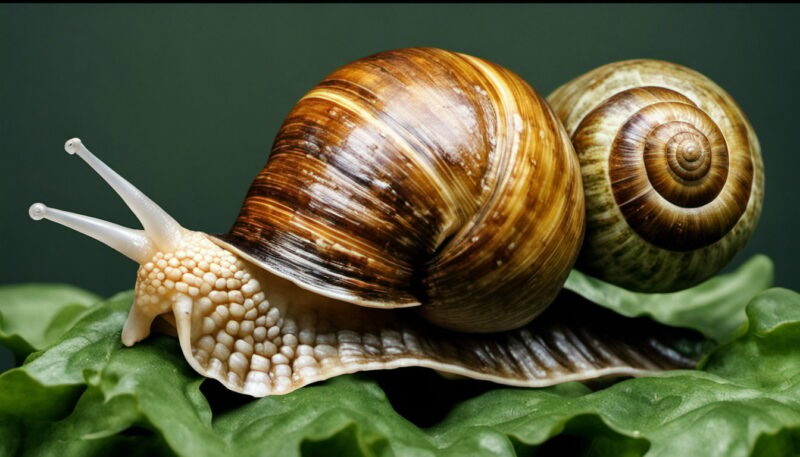
There are a few key points to remember regarding snails and their shells. First and foremost, it is important to know that no snail species is currently known to shed its shell. This includes various types such as the garden snail, Roman snail, African land, apple, mystery, aquarium, freshwater, nerite, and river snails.
You may wonder if snails ever leave their shells. Though they can partially come out of their shells to search for food and mates, they cannot live without their shells or come out of them completely. It is essential for their survival and protection.
You might also be curious whether snails change shells like other creatures, such as hermit crabs. However, this is not the case for snails. They do not change shells because their shell is integral to their body. Their shells grow with them, and they cannot simply discard them for another.
As for the origin of snail shells, it is interesting to note that all mollusks, including snails, build their own shells. Thus, snails are born with their shells. These shells develop throughout their lives as the snail’s body grows and develops.
In summary, understanding the relationship between snails and their shells can give you a better appreciation of these fascinating creatures. Remember that snails do not shed, change, or leave their shells; they are a crucial part of their existence.
Shedding and Repairing Shells
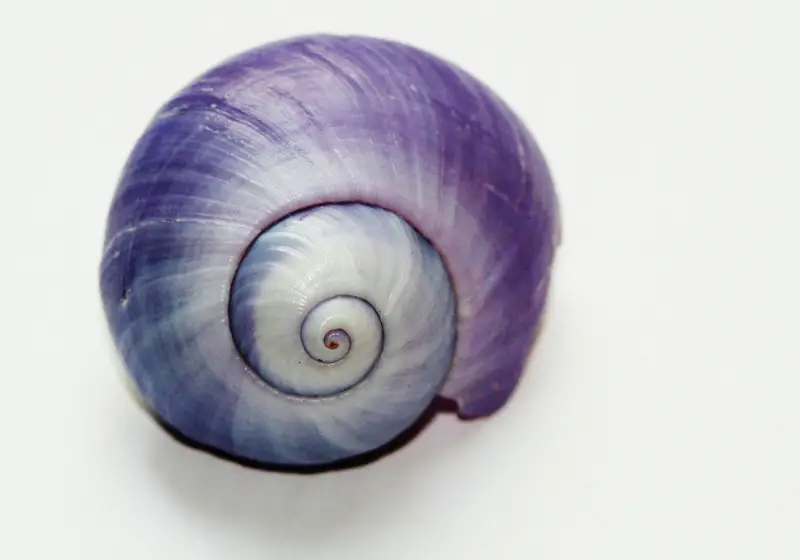
Shedding the shell is not a common or known behavior in snails. No species of snail is known to shed its shell. As a snail’s body grows, its shell grows, making the shedding process unnecessary. However, snails can repair their damaged shells to some extent.
When a snail’s shell gets damaged, it can repair the shell with the help of its mantle. The mantle is an internal organ responsible for generating new shell material. This organ contains cells that produce a mix of calcium carbonate and a protein called chitin, creating a strong and flexible polymer.
These cells in the mantle secrete the shell materials, filling the damaged or broken areas. Maintaining your snail in a safe and healthy environment with enough calcium to fuel the repair process is essential. Providing the snail with calcium supplements, cuttlebone, or eggshells will supply the necessary nutrients for rebuilding the damaged shell.
To ensure the shell remains healthy, monitoring your snail’s environment is crucial. Factors like incorrect water parameters and poor diet can contribute to a weakened shell, making it more susceptible to damage. Always maintain ideal water conditions and provide a balanced diet to keep your snail’s shell strong and healthy.
In summary, although snails don’t shed their shells, they can repair damaged shells by secreting shell materials from their mantle. Proper care and environmental conditions are key factors in maintaining a strong, healthy shell for your snail.
How Do Snails (And Other Molluscs) Create Their Shells?
Shells and Predators
As an owner or observer of snails, you might wonder how their shells function beyond basic housing. In fact, shells provide a crucial line of defense against predators. When you observe a snail, its shell certainly appears to be a key part of its survival strategy.
One fascinating aspect of snail shells is an important component called the operculum, which acts as a door that can be opened or closed at the snail’s will. This door protects the snail from potential predators that might try to enter and harm its shell.
Moreover, snails are known for their ability to retreat into their shells at the first sign of danger, enhancing their protection against predators. Some common predators include birds, reptiles, and even other invertebrates.
It is worth noting, however, that a snail’s shell is not a disposable item. Contrary to the case of hermit crabs, snails are not known to shed their shells, as they grow with the snail in a spiraling pattern.
By understanding how snail shells function, you now have a better appreciation for their important role in the lives of these unique creatures. Keep this knowledge in mind as you learn more about snails, their predators, and the protective role of their shells.
Shell Structure and Features
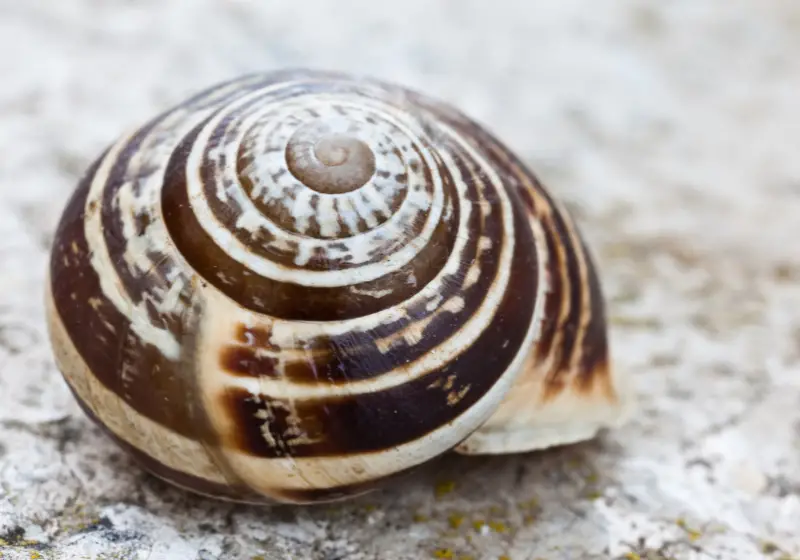
To understand whether snails shed their shells, it’s important to first learn about the shell structure and its features. A snail’s shell serves as a protection mechanism and comprises multiple layers. The primary component of the shell is calcium carbonate, which gives it rigidity and strength.
The mantle tissue is responsible for producing the shell, and it creates three distinct layers. The outermost layer comprises conchiolin, a proteinaceous material that forms the periosteum. The middle layer, the prismatic layer, consists of calcified calcium carbonate crystals. The innermost layer, called nacre, comprises thin, overlapping platelets of calcium carbonate that produce an iridescent effect.
Snail shells can exhibit unique features, such as mutations that result in left-handed or right-handed coiling. These genetic variations can influence the direction the shell spirals, with most snail species possessing right-handed shells.
Shells serve as both endoskeletons and exoskeletons for snails. This means that their shell is a crucial part of their internal support system and serves as a protective outer barrier from predators and external threats like desiccation.
In summary, the shell is an essential feature of a snail, offering protection and structural integrity to the animal. With its complex layers of conchiolin, calcium carbonate, and nacre, the shell is a remarkable example of biological engineering, and its importance in a snail’s life cannot be overstated. Knowing the intricacies of shell structure can provide valuable insights into the likelihood of snails shedding or changing their shells.
Gastropods and Other Mollusks
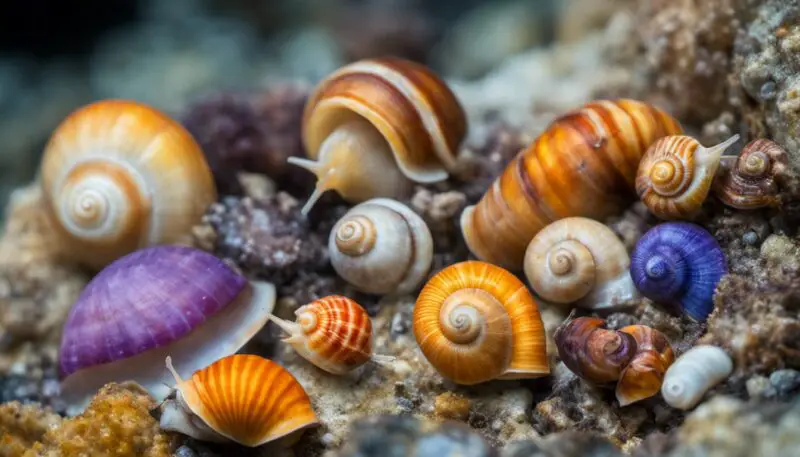
When exploring the world of mollusks, you will come across different classes and types like gastropods, bivalves (such as clams), and cephalopods. Gastropods are the largest group in the phylum Mollusca, comprising over 65,000 animal species, including snails and slugs. Here, you will learn more about gastropods and other mollusks and whether snails shed their shells.
Gastropods possess a unique characteristic: a shell. Generally, these shells serve as a protective layer, offering the gastropods a place to retreat and hide. The shell also plays a role in calcium storage and muscle attachment. Familiar examples of gastropods include snails, which can withdraw into their shells, and slugs that have reduced or lost their shells. The shells tend to be coiled, and the opening can even be closed off by a cover called the operculum.
You may wonder if snails shed their shells like some other animals do. The answer is no. Gastropods, such as snails, do not shed their shells4. While snails can leave their shells searching for food or mates, they cannot survive without them5. That is because their shells are an integral part of their body and, consequently, lack the necessary bone cells to shed or repair any shell damage.
As you delve deeper into mollusks, you will discover the bivalves, like clams. These mollusks have two shells connected by a hinge and primarily inhabit aquatic environments. Unlike gastropods, clams do not have a visible head or a coiled shell.
You will also come across another group, the cephalopods, which includes creatures like octopuses and squids. This group vastly differs from gastropods as they do not have external shells and are more advanced, displaying impressive intelligence and problem-solving abilities.
To summarize, gastropods, such as snails, and other mollusks like clams and octopuses, have different characteristics and adaptations. As you continue to learn about these fascinating creatures, remember that snails do not shed their shells, and each group within the mollusk phylum has unique traits.
Turtles and Other Shell-Dwellers

When comparing turtles with other shell-dwelling creatures, it’s vital to understand the differences in their shells and shedding processes. Unlike snails with mantles that secrete protein and calcium to form their shells, turtles possess a more complex shell structure.
Your turtle’s shell consists of 60 different bones, including vertebrae and ribs, which are fused. These bones are covered by a layer called the periosteum, which produces the hard outer layer known as the scutes. As your turtle grows, it needs to shed its scutes to allow for expansion and accommodate its larger size.
Turtles undergo a shedding process, which may occur every one to five years, depending on the species and their specific needs. The outer layers peel away during this time, making room for new scutes. Monitoring this process is important, ensuring it takes place smoothly and without complications.
In contrast, snails can repair minor breakages to their shells, but the shedding process differs from that of a turtle.
Here are some key facts about turtles and their shells:
- Turtles have bone structures within their shells, including ribs and vertebrae.
- Their shells are covered by a periosteum layer, which produces the hard outer layer known as scutes.
- Shedding is essential for turtle growth and occurs every one to five years.
- This process is distinct from snails, which repair minor breakages in their shells.
In conclusion, understanding turtle shell structure and shedding processes is crucial for properly caring for these fascinating creatures. Knowing their unique anatomy and growth patterns, you can ensure your turtle remains healthy and thriving.
Hermit Crabs and Shells
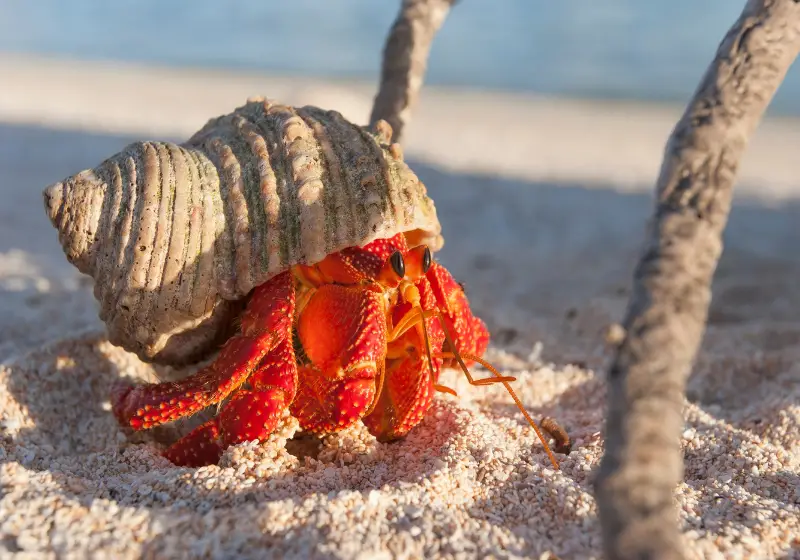
Hermit crabs are fascinating crustaceans that rely on snail shells for their homes. Unlike snails, hermit crabs can’t grow their shell and must find an empty one that fits their body. As they grow, they often need to search for new, larger shells to accommodate their increased size. In this way, hermit crabs can outgrow their shells, which differs from how snails handle them.
When it comes to the relationship between hermit crabs and snail shells, it can be quite intricate. Sometimes, hermit crabs and snails compete for the same shells, resulting in clashes between the two species. In other instances, the presence of one species may benefit the other.
For example, hermit crabs can help control snail populations, while snails produce new, vacant shells that the hermit crabs can eventually use.
It’s important to note that snails do not shed or change their shells, unlike hermit crabs. Snail shells grow with the snail, providing a permanent, protective home that is never outgrown. This is a key difference between the two species and why hermit crabs rely on snail shells for their housing needs.
One possible concern you might have is if hermit crabs kill snails to obtain their shells. Although it’s rare, there have been instances where hermit crabs have been observed attempting to evict a snail from its shell. While this behavior might not be common, it does provide an interesting glimpse into the complex relationship between hermit crabs and snails regarding shell use.
Understanding the interaction between hermit crabs and snail shells helps you appreciate these fascinating creatures and how they navigate their environment. This knowledge can also inform your approach to maintaining healthy ecosystems in aquariums or aquatic habitats.
Additional Considerations

Feeding Snails for Optimal Shell Health
To maintain healthy snail shells, it’s essential to provide a diet rich in calcium and other nutrients. Snails will benefit from various vegetables, such as spinach, broccoli, and turnip, which are rich in calcium and other minerals. These vegetables not only promote shell growth but also contribute to the overall health of the snails.
Another option to increase calcium intake is by offering crushed eggshells to your snails. You can sterilize eggshells by boiling them for a few minutes before adding them to the snail’s habitat. Calcium supplements are also available in pet stores, specifically designed for snails and other shelled creatures.
Snail Shells and Human Uses
Though snails may not shed their shells, these structures can still have various uses for humans. Some cultures utilize Snail shells as utensils, decorative items, or musical instruments. For example, the shells can be turned into beads for jewelry or ground into powder for traditional medicines.
Snail shells also provide valuable insight into the natural world, offering clues about the ecological health of the environment. A damaged or malformed snail shell may indicate the presence of pests or parasites in the area, which can also have implications for other organisms.
In conclusion, while snails do not shed their shells, the necessary care and management of snail habitats ensure optimal shell health. This includes providing a calcium-rich diet and considering the potential implications of shell quality on the surrounding environment.
FAQs: Do Snails Shed Their Shells
How do snail shells grow?
Snail shells grow with the snail throughout its life. They are predominantly made of calcium carbonate and consist of three layers. As snails grow, they generate new layers that enlarge the shell in a spiral pattern, providing continuous protection and support for their expanding body (source).
Can snails survive without their shells?
No, snails cannot survive without their shells. The shells are essential to their anatomy, providing protection and support for their internal organs. Removing a snail from its shell would result in its death (source).
What happens when a snail loses its shell?
A snail can’t lose its shell entirely, as it is an integral part of the snail’s body. However, snails can repair the damage if a shell suffers minor breakage. Occasionally, snail owners may use temporary methods such as tape to hold the shell together while the snail naturally fixes it (source).
Do snails ever change shells?
Unlike hermit crabs, snails do not change shells. They are born with their shells, which grow with them throughout their lives. Consequently, snails do not require or seek out new shells like hermit crabs (source).
How do snails reproduce?
Snails typically reproduce through “mating,” where two snails exchange sperm to fertilize each other’s eggs. Some species of snails are hermaphroditic, meaning each individual has both male and female reproductive organs. After mating, snails will lay their eggs in a suitable environment to hatch (source).
Why did my snail exit its shell?
Snails are unlikely to leave their shells voluntarily, as the shell is essential to their anatomy. If you observe a snail partially extending out of its shell, it may be due to environmental stress or poor health. In either case, it is crucial to address the underlying issues to ensure the snail’s well-being (source).

![Do Assassin Snails Eat Each Other? [Full Guide]](https://allourcreatures.com/wp-content/uploads/2021/11/assassin-snail-768x465.jpg)
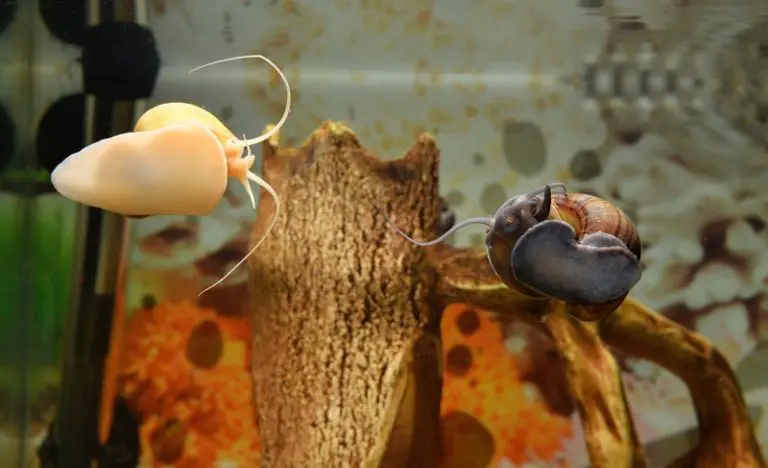
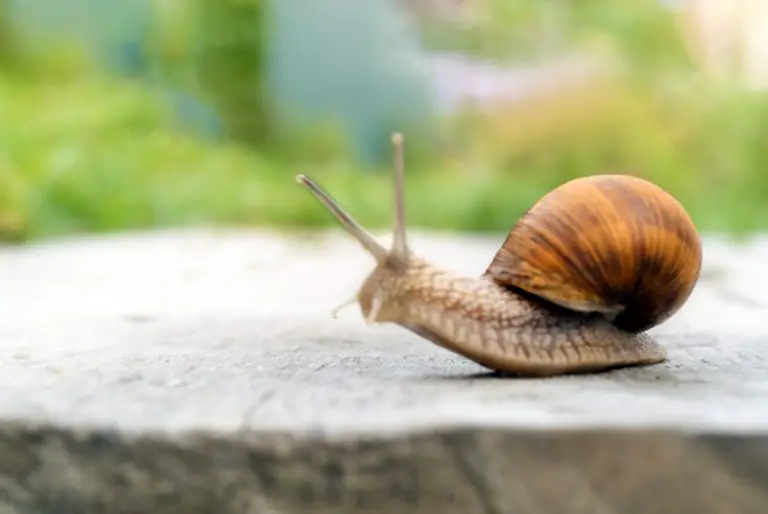
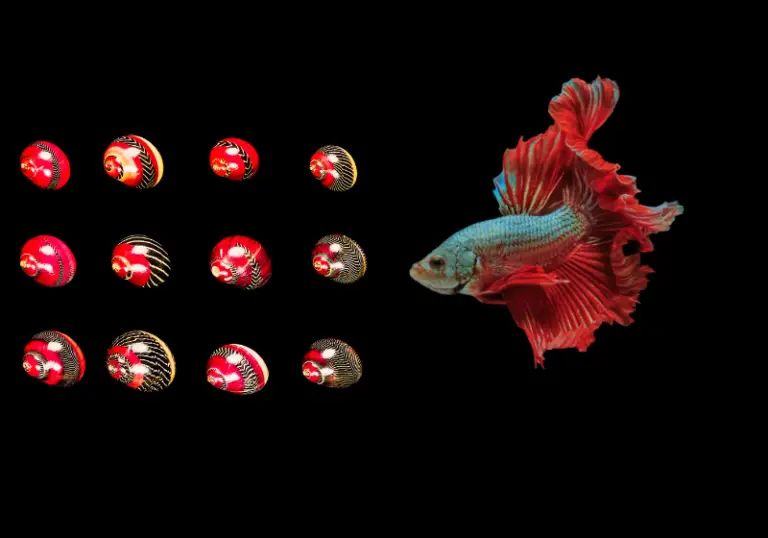
![Do Snail Shells Grow? [Full Guide]](https://allourcreatures.com/wp-content/uploads/2021/11/growing-snail-shells-768x501.jpg)
